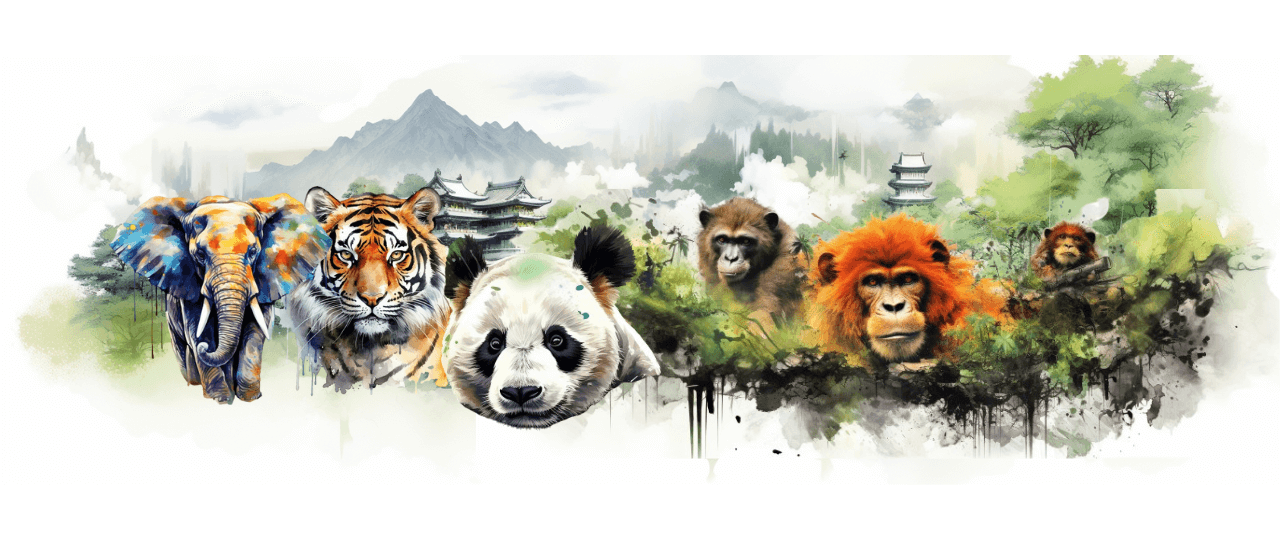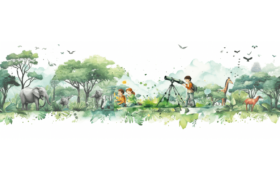Exploring Asia’s diverse wildlife offers families a unique and educational adventure. This continent, rich in natural beauty, is home to fascinating animals like elephants, tigers, and orangutans. Introducing children to these creatures in their natural habitats is more than just an exciting experience; it instills a lifelong appreciation for nature and the importance of conservation. Such encounters educate young minds about ecological balance and environmental threats and strengthen family bonds through shared unforgettable experiences. In a world increasingly disconnected from nature, these wildlife adventures are vital to the natural world, teaching respect for our planet and its inhabitants.
Overview of the Diverse and Unique Wildlife in Asia
Asia is a continent of incredible biodiversity, offering a variety of wildlife experiences:
Majestic Mammals: From the Bengal tigers of India to the Asian elephants in Thailand, Asia is home to some of the world’s most iconic mammals.

Birds and Marine Life: The continent also boasts a rich array of bird species, like the peafowls of Sri Lanka, and diverse marine life in the coral reefs of the Philippines.
Unique Species: Asia hosts unique species, such as the Komodo dragon in Indonesia and the giant panda in China, which are not found anywhere else.
Varied Ecosystems: The wildlife in Asia thrives in various habitats, from the rainforests of Borneo to the Himalayan mountain ranges, offering families a chance to explore different ecological environments.
Asian wildlife encounters offer a treasure trove of experiences for families, combining education, inspiration, and enjoyment. These encounters not only contribute to a child’s personal growth but also cultivate a collective responsibility toward preserving our planet’s rich natural heritage.
Destinations for Family Wildlife Adventures in Asia
Asia, with its rich biodiversity and varied landscapes, offers a plethora of destinations for family wildlife adventures. Choosing the right destination for a family trip involves considering several factors to ensure a safe, educational, and enjoyable experience for children and adults alike.
Criteria for Choosing Kid-Friendly Wildlife Destinations
Safety: The foremost consideration is the safety of the wildlife experience. Destinations should have a good safety record and offer guided tours with experienced professionals.
Educational Value: Look for destinations that provide educational insights about the animals and their habitats. Interactive learning experiences, such as wildlife conservation talks or guided nature walks, can be particularly engaging for children.
Age-Appropriate Activities: Choose destinations that offer activities suitable for the age range of your children. Younger kids might enjoy shorter, more interactive experiences, while older children and teenagers might appreciate longer, more immersive activities.
Ethical and Responsible Practices: Supporting destinations that practice ethical wildlife tourism is crucial. This includes not engaging in activities that harm or distress the animals, such as riding elephants or close-contact encounters with wild animals.
Variety of Wildlife: Destinations that offer a diverse range of wildlife can provide a more enriching experience. This variety helps in teaching children about different species and ecosystems.
Accessibility and Facilities: Consider the ease of access to the destination, especially if traveling with younger children. Additionally, look for places with family-friendly facilities, such as restrooms, dining options, and resting areas.
Opportunities for Adventure and Relaxation: Destinations that balance adventure (like safari rides or jungle treks) and relaxation (such as comfortable accommodations or leisure activities) can make the trip enjoyable for both kids and adults.
Considering these criteria, families can choose destinations that provide unforgettable wildlife experiences and ensure a comfortable, educational, and ethically responsible trip. Asia, with its incredible array of wildlife and cultures, has numerous destinations that cater to these needs, promising adventures that families will cherish for a lifetime.
India: Ranthambore National Park
Ranthambore National Park, located in the state of Rajasthan, India, is renowned for its tiger safaris and is a prime destination for families seeking a wildlife adventure. The park provides a kid-friendly environment where children can marvel at the majestic tigers in their natural habitat and learn about wildlife conservation.
Tiger Safaris in a Kid-Friendly Environment
Guided Safaris: Ranthambore offers guided safari tours in secure, open-top vehicles, providing a safe way for families to observe tigers and other wildlife.
Engaging for Children: The thrill of spotting a tiger in the wild is an exhilarating experience for children. The park’s diverse wildlife, including leopards, deer, monkeys, and a variety of bird species, adds to the excitement.
Flexible Timings: Safari tours are available at different times of the day, allowing families to choose a schedule that suits their children’s routines.
Why Visiting with Kids
Interactive and Fun: The park’s natural beauty and wildlife offer an engaging, real-world contrast to classroom learning or digital entertainment.
Building Awareness: It helps in instilling a love for nature and an understanding of the importance of environmental preservation from a young age.
Memorable Family Experience: The adventure of a tiger safari and the beauty of Ranthambore’s landscapes create lasting memories for the whole family.
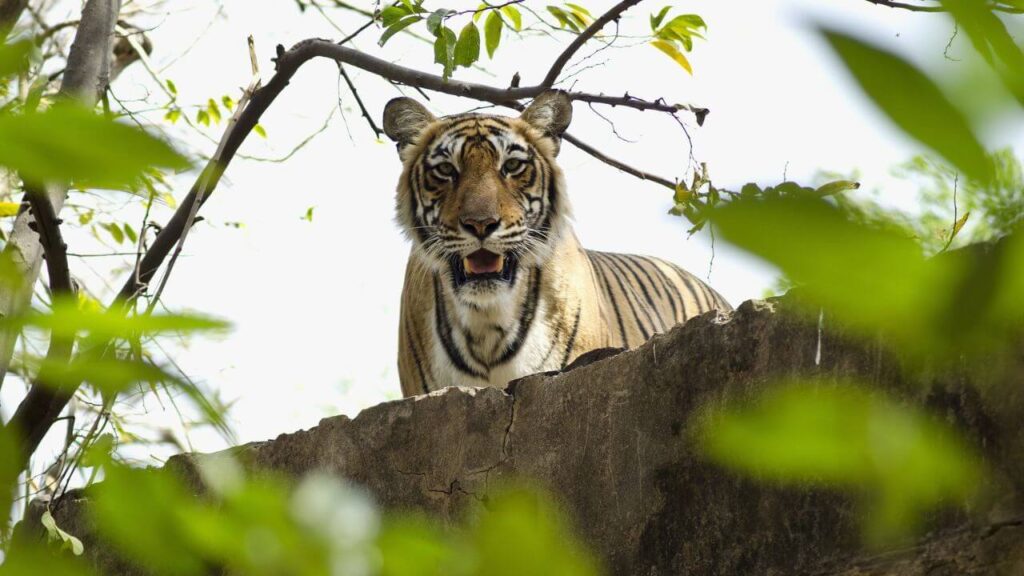
Best Time to Visit
- October to June: The best time to visit Ranthambore National Park is from October to June, with the peak months for tiger sightings typically being March to May.
- Cooler Weather: The cooler months (November to February) are more comfortable, especially for families with children, as the temperatures are more moderate.
- Park Closure: The park is usually closed during the monsoon season (July to September), and the exact dates can vary each year.
Ranthambore National Park is a fantastic destination for families combining adventure with education. The experience of seeing tigers in the wild, along with the park’s focus on conservation, makes it a valuable and enjoyable trip for both children and adults.
Malaysia: Sepilok Orangutan Rehabilitation Centre, Borneo
The Sepilok Orangutan Rehabilitation Centre in Sabah, Borneo, Malaysia, offers a unique and educational experience, particularly for families with children. This center is dedicated to the rehabilitation of orphaned orangutans and provides visitors with the opportunity to observe these incredible creatures up close.
Up-close Encounters with Orangutans
Viewing Platforms: The center has special viewing platforms and a boardwalk that allows families to watch orangutans in a natural but protected environment.
Feeding Times: Visitors can witness the feeding of orangutans at designated times, offering a chance to see them at a closer range while they interact with each other and their caregivers.
Why Visiting with Kids
Interactive Learning Experience: Children can learn about wildlife conservation engagingly and interactively, seeing firsthand how rehabilitated animals are cared for and returned to the wild.
Inspiring Young Conservationists: The experience can instill a sense of responsibility and passion for environmental issues in young visitors, shaping them into future conservation advocates.
Unique Wildlife Experience: Seeing orangutans up close is a rare and memorable experience, making it an exciting outing for children.

Best Time to Visit
- Year-Round Destination: The Sepilok Orangutan Rehabilitation Centre can be visited annually.
- Dry Season: The best time is generally during the dry season, from March to October, as the weather is more favorable for outdoor activities.
- Avoid Peak Hours: To avoid crowds and enjoy a more tranquil experience, visiting during the weekdays or outside of feeding times can be advantageous.
Visiting the Sepilok Orangutan Rehabilitation Centre is an educational journey into the world of wildlife conservation. It’s an opportunity to teach children about the importance of protecting endangered species and their habitats, all while experiencing the unique joy of observing orangutans in a natural setting.
Thailand: Elephant Nature Park, Chiang Mai
Elephant Nature Park in Chiang Mai, Thailand, is a sanctuary for rescued elephants and is renowned for its ethical approach to elephant tourism. This destination offers a unique experience for families, especially children, to interact with these gentle giants in a responsible and educational environment.
Ethical Elephant Encounters
Rescue and Rehabilitation: The park focuses on rescuing and rehabilitating distressed elephants from the tourism and logging industries.
No Riding Policy: Adhering to ethical tourism practices, the park does not allow elephant riding, ensuring the well-being and dignity of the elephants.
Participating in Elephant Care and Feeding
Interactive Activities: Visitors can participate in daily care activities such as feeding the elephants, which is a delightful experience for children.
Observing Natural Behaviors: Families can observe elephants bathing in the river, socializing, and roaming freely in the park, offering an authentic glimpse into their natural behaviors.
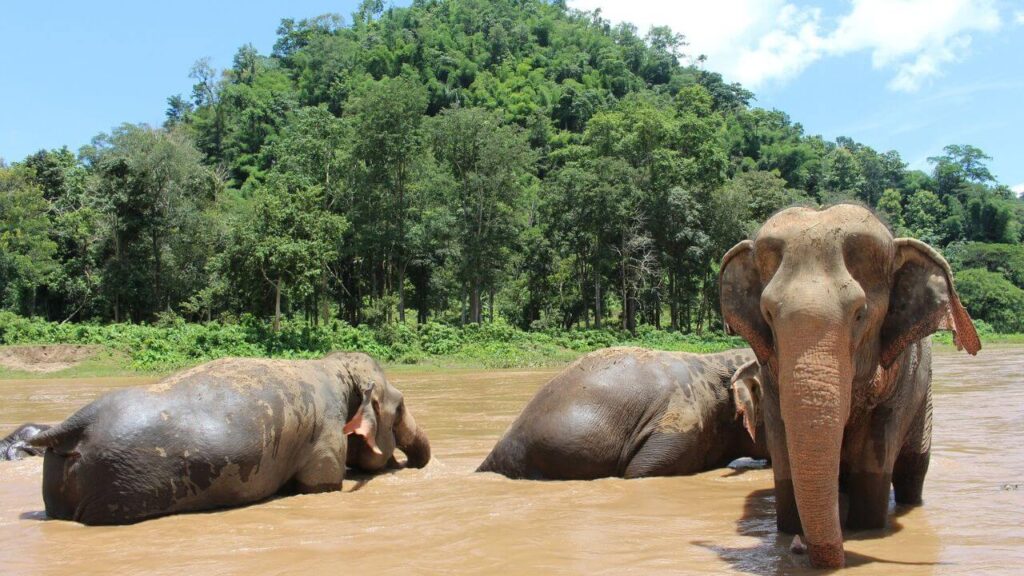
Why Kids Love Going There
Engaging and Educational: The park provides an engaging way for children to learn about elephants and the importance of wildlife conservation.
Fun Learning Experience: Activities like feeding and watching the elephants in their natural habitat are fun and educational for children.
Inspiring Compassion: Interacting with these rescued elephants fosters empathy and compassion in young minds, teaching them the importance of kindness to animals.
Best Time to Visit
- Cool and Dry Season: The best time to visit Elephant Nature Park is during the cool and dry season, from November to February when the weather is more comfortable for outdoor activities.
- Avoid the Rainy Season: The rainy season, from July to October, can be less ideal due to heavy rains and muddy conditions, which might be challenging for younger children.
- Booking in Advance: It’s advisable to book your visit in advance as the park is a popular destination and limits the number of visitors per day to ensure a quality experience for both the visitors and the elephants.
Elephant Nature Park offers a unique opportunity for families to learn about ethical animal tourism and the importance of conservation. The experience of interacting with these magnificent creatures in a respectful manner is not only enjoyable but also imparts valuable lessons about empathy and the need to protect our planet’s wildlife.
Sun Bears in Khao Yai and Kuiburi National Parks, Thailand
Khao Yai and Kuiburi National Parks in Thailand offer families an opportunity to witness the elusive sun bear, the smallest of the world’s bears, known for its distinct crescent-shaped chest patch. These parks are among the few places where sun bears can be observed in their natural habitat.

Sun Bears in Khao Yai National Park
Diverse Ecosystem: Khao Yai, Thailand’s third-largest and one of its most visited national parks, boasts a rich biodiversity, including a variety of wildlife like elephants, gibbons, and of course, sun bears.
Guided Wildlife Watching: The park offers guided tours, where experienced guides can help visitors spot sun bears, especially around fruiting trees, a favorite food source for these bears.
Why Visiting with Kids
Educational Experience: Observing sun bears in the wild provides an excellent educational experience for children, teaching them about wildlife and the importance of conservation.
Adventure and Exploration: Both parks offer an adventurous experience in nature, perfect for sparking children’s interest in the outdoors and wildlife.
Varied Wildlife: Besides sun bears, the parks are home to a range of other wildlife, making the visit a well-rounded nature experience.
Best Time to Visit
- Cool and Dry Season: The best time to visit these parks is during the cooler, dry season from November to February, when the weather is more pleasant, and wildlife is more likely to be spotted.
- Avoiding the Rainy Season: The rainy season, from July to October, can make some park trails inaccessible and wildlife spotting more challenging.
A visit to Khao Yai to see sunbears and other wildlife offers a blend of adventure, education, and natural beauty, making it an ideal family outing for nature enthusiasts and wildlife lovers.
Singapore: Singapore Zoo and Night Safari
Singapore Zoo and the adjacent Night Safari offer a remarkable experience for families, combining interactive and educational encounters with a diverse range of wildlife. These attractions are particularly appealing for children, providing a blend of entertainment and learning in a world-class setting.
Interactive and Educational Experiences with Diverse Wildlife
Wide Range of Species: Singapore Zoo is home to over 2,800 animals from over 300 species, showcasing wildlife from rainforests, savannahs, and aquatic environments.
Educational Shows and Feeds: The zoo offers various shows and feeding sessions, which are both entertaining and informative, giving children insights into animal behaviors and conservation efforts.
Night Safari Adventure for a Unique Wildlife Experience
World’s First Nocturnal Zoo: The Night Safari is the world’s first nocturnal zoo and offers an exceptional experience to see nocturnal animals in their naturalistic nighttime habitats.
Tram Rides and Walking Trails: Visitors can explore the park via a guided tram ride or by walking along the trails, offering an exciting and slightly mysterious adventure that is ideal for sparking children’s curiosity.
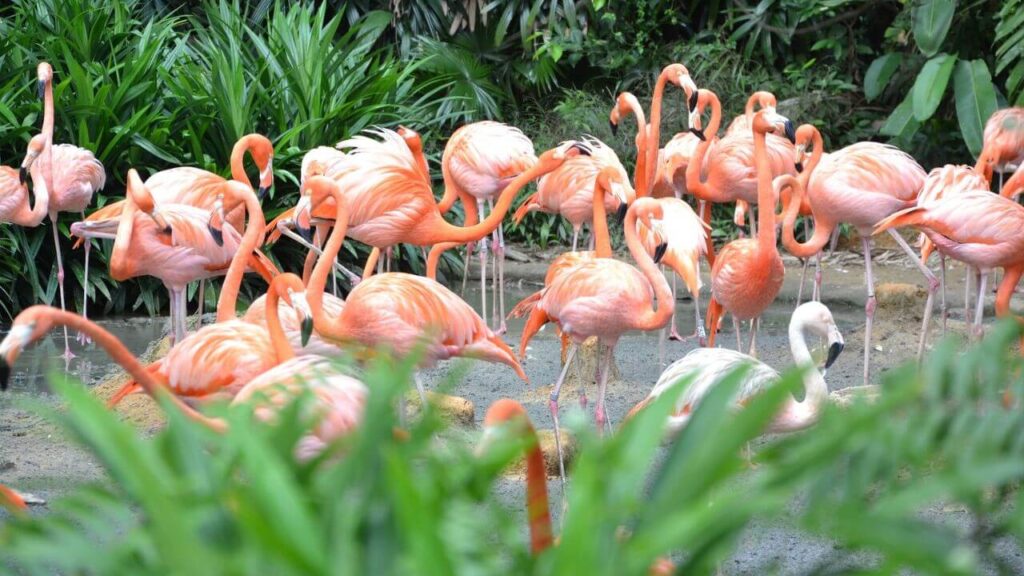
Why Visiting with Kids
Engaging Learning Environment: Both the zoo and Night Safari offer interactive and engaging ways for children to learn about wildlife, biodiversity, and the importance of ecological balance.
Fun and Adventure: The exciting and safe environment of these parks makes them perfect for kids, with ample opportunities for adventure and discovery.
Family Bonding: These experiences provide excellent opportunities for family bonding, creating lasting memories through shared adventures.
Best Time to Visit
- Year-Round Destination: Singapore’s equatorial climate makes the zoo and Night Safari great to visit any time of the year.
- Morning Visits to the Zoo: Visiting the zoo in the morning is recommended to avoid the midday heat and to catch the animals when they are most active.
- Evening for Night Safari: The Night Safari opens in the evening, making it a unique after-dark experience. It’s cooler and more comfortable to explore during these hours.
Singapore Zoo and Night Safari offer a blend of education, conservation, and fun, making them ideal destinations for families with children. The opportunity to observe various animals, both during the day and at night, provides a comprehensive and unforgettable wildlife experience.
Indonesia: Komodo National Park
Komodo National Park in Indonesia is a unique and exhilarating destination for families, especially those interested in seeing the world-famous Komodo dragons in their natural habitat. This UNESCO World Heritage site offers a safe and educational adventure for families with guided tours that are suitable for children.
Encounter with Komodo Dragons
Rare Wildlife Experience: The park is one of the few places in the world where you can see Komodo dragons, the largest living species of lizard, in the wild.
Guided Viewing: Trained guides accompany visitors to ensure safe and respectful viewing of the Komodo dragons, providing a thrilling yet secure experience.
Guided Tours Suitable for Families
Family-friendly Itineraries: The tours are designed to be engaging for all ages, with guides sharing fascinating facts about dragons and their ecosystem.
Educational Aspect: These tours provide an excellent opportunity for children to learn about these unique creatures and the importance of conservation efforts to protect them.
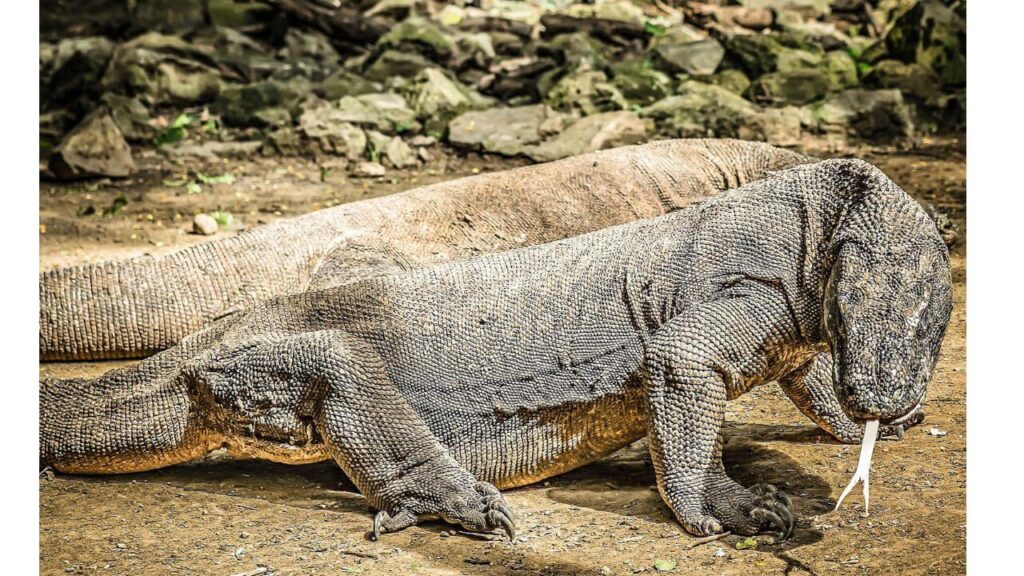
Why Going With Kids
Adventure and Learning: Visiting Komodo National Park is a great way for children to experience adventure and learn about wildlife and natural habitats.
Inspirational Experience: Seeing these impressive creatures in the wild can inspire a deeper interest in nature and conservation in young minds.
Unique Family Memories: The experience of visiting such a unique environment and seeing Komodo dragons is a memorable adventure that families will cherish.
Best Time to Go
- Dry Season (April to December): The best time to visit Komodo National Park is during the dry season, which runs from April to December. During this period, the weather is more predictable, and the seas are calmer, making boat travel to the islands more comfortable.
- Avoid the Rainy Season: The rainy season, from January to March, can make trails slippery and difficult to navigate, especially for families with young children.
- Booking in Advance: It’s advisable to book tours in advance, especially during peak tourist seasons, to ensure availability.
Visiting Komodo National Park is an extraordinary experience for families, offering a mix of adventure, education, and the chance to witness one of the planet’s most intriguing species in its natural environment.
Japan: Monkey Park, Kyoto
The Monkey Park in Kyoto, Japan, officially known as Iwatayama Monkey Park, offers a unique experience for families to observe snow monkeys, also known as Japanese macaques, in their natural habitat. This attraction is particularly delightful for children, combining wildlife observation with outdoor activity.
Observing Snow Monkeys in Their Natural Habitat
Snow Monkeys Up Close: The park is home to a troop of Japanese macaques that roam freely. Visitors can see these fascinating creatures as they play, interact, and go about their daily routines.
Unique Interaction Opportunity: Unlike many other wildlife parks, here, visitors are the ones enclosed (in a special viewing area) while the monkeys roam free, offering a unique perspective on wildlife observation.
Family-Friendly Hiking Trails
Accessible Hiking: The park is accessed via a hike up a hill, which is relatively easy and suitable for families with children. The walk offers scenic views and a chance to enjoy nature.
Engaging Journey: The hike to the monkey park adds to the adventure, making the encounter with the monkeys more rewarding.
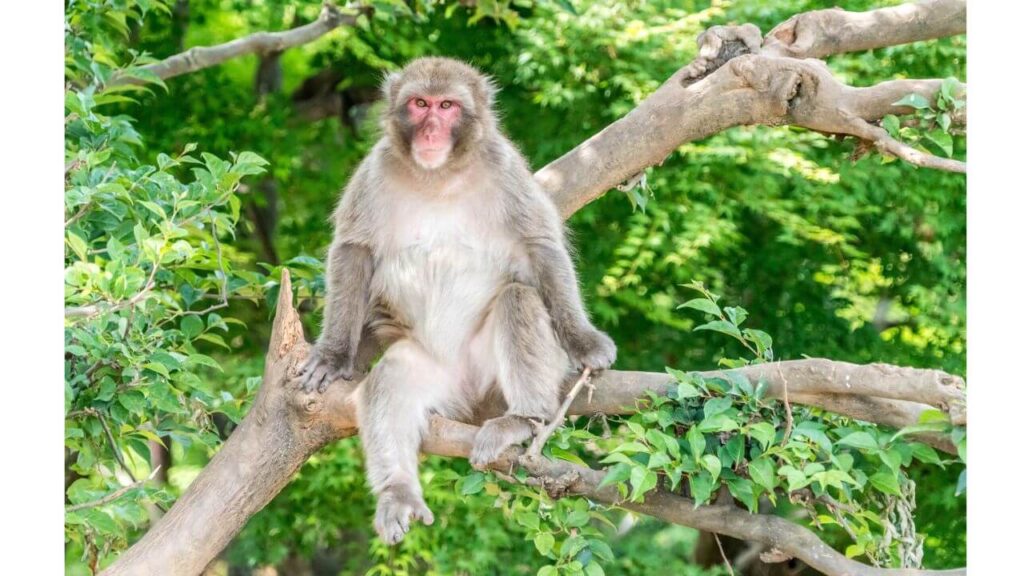
Why Kids Love Going to Monkey Park
Fun and Educational: Watching the snow monkeys is both entertaining and educational for children, offering insights into primate behavior in a natural setting.
Interactive Experience: The opportunity to observe the monkeys up close, in a safe environment, is a thrilling experience for young visitors.
Nature Exploration: The hike to the park and the outdoor setting provide a great opportunity for kids to explore and appreciate nature.
Best Time to Visit
- Year-Round Attraction: Monkey Park is open throughout the year, offering different experiences each season.
- Winter Highlights: During winter, especially when there’s snow, the monkeys’ behavior and interactions can be particularly interesting to observe.
- Pleasant Weather: Spring and autumn offer comfortable temperatures for hiking and enjoying the outdoors.
- Avoid Extreme Heat: The summer months can be quite hot and humid, which might be less comfortable, especially for younger children.
Visiting the Monkey Park in Kyoto is an enjoyable and educational outing for families. It offers a blend of nature, wildlife, and physical activity, making it a popular destination for those traveling with children to Kyoto. The experience of seeing the snow monkeys in a natural and respectful setting is both memorable and inspiring, especially for young nature enthusiasts.
China: Visit the Giant Pandas in Chengdu
Chengdu, located in China’s Sichuan province, is famously known as the home of the giant panda, one of the world’s most beloved and iconic animals. Visiting Chengdu offers families a unique opportunity to see these magnificent creatures up close and learn about conservation efforts to protect them.
Encounter with Giant Pandas
Chengdu Research Base of Giant Panda Breeding: This world-renowned facility focuses on researching and breeding giant pandas. Visitors can see pandas in environments that mimic their natural habitats.
Panda Enclosures: The base has large enclosures that allow pandas to roam, play, and rest, offering visitors a chance to observe their daily activities and behaviors.

Why Visiting with Kids
Engaging Experience: The chance to see giant pandas is a captivating experience for children, sparking their interest in wildlife and nature.
Interactive and Fun: The base often features interactive exhibits and activities that are both fun and educational for younger visitors.
Inspiring Young Minds: The emphasis on conservation at the panda base can inspire a sense of responsibility and interest in environmental issues among children.
Best Time to Visit
- Spring and Autumn: The best times to visit are during the spring (March to May) and autumn (September to November) when the weather is mild and pleasant, making the visit more comfortable.
- Avoiding Crowds: The base can get crowded, especially during Chinese national holidays and weekends. Visiting on a weekday or during off-peak hours can provide a more relaxed experience.
- Panda Activity: Pandas are typically more active during the cooler parts of the day, so early morning visits are recommended for the best chance to see them moving around and playing.
A visit to Chengdu to see the giant pandas is not only a delightful experience for families but also an important educational journey. It allows children and adults alike to appreciate the beauty of these animals and understand the vital efforts being made to ensure their survival in the wild.
Benefits of Wildlife Encounters for Children
Educational Value: Wildlife encounters in Asia provide hands-on learning experiences. Children can learn about different species, their habitats, and the importance of biodiversity, which enhances their knowledge and appreciation of nature.
Inspiration for Conservation: Witnessing wildlife firsthand can inspire a lifelong commitment to conservation. Understanding the challenges faced by these species encourages a sense of responsibility and a desire to protect the environment.
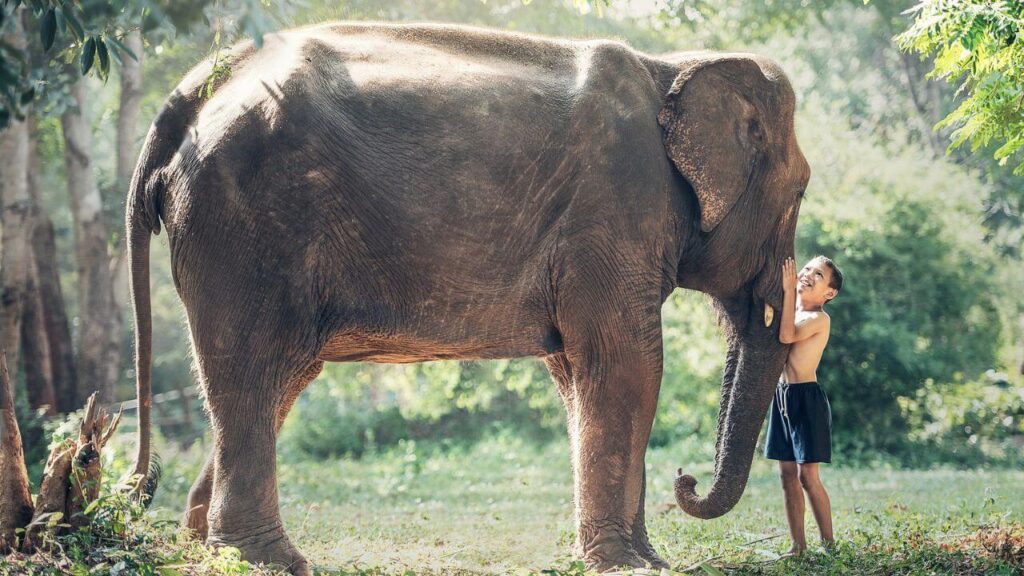
Development of Empathy: Interacting with animals fosters empathy in children. Recognizing animals as living, feeling beings helps develop compassion and a caring attitude toward all life forms.
Enhancement of Social Skills: Wildlife trips often involve group activities and interactions with other children and adults, which can enhance social and communication skills.
Stress Reduction: Being in nature and observing wildlife has been shown to reduce stress and promote mental well-being, which is beneficial for children growing up in a fast-paced, digital world.
Tips for Traveling with Children on Wildlife Excursions
Research and Choose Family-Friendly Destinations: Look for wildlife destinations that cater to families and offer age-appropriate activities. These destinations often have interactive exhibits, guided tours suitable for children, and educational programs.
Safety First: Discuss safety rules with your children. Teach them to maintain a safe distance from wildlife, listen to guides’ instructions, and stay close to you during excursions.
Plan Age-Appropriate Activities: Tailor your itinerary to include activities suitable for your children’s age and interests. Younger kids may enjoy shorter, more interactive experiences, while older children might appreciate longer, more immersive activities.
Bring Binoculars and Cameras: Provide your children with binoculars and child-friendly cameras to encourage them to observe and document wildlife. It’s a great way to engage them in the experience.
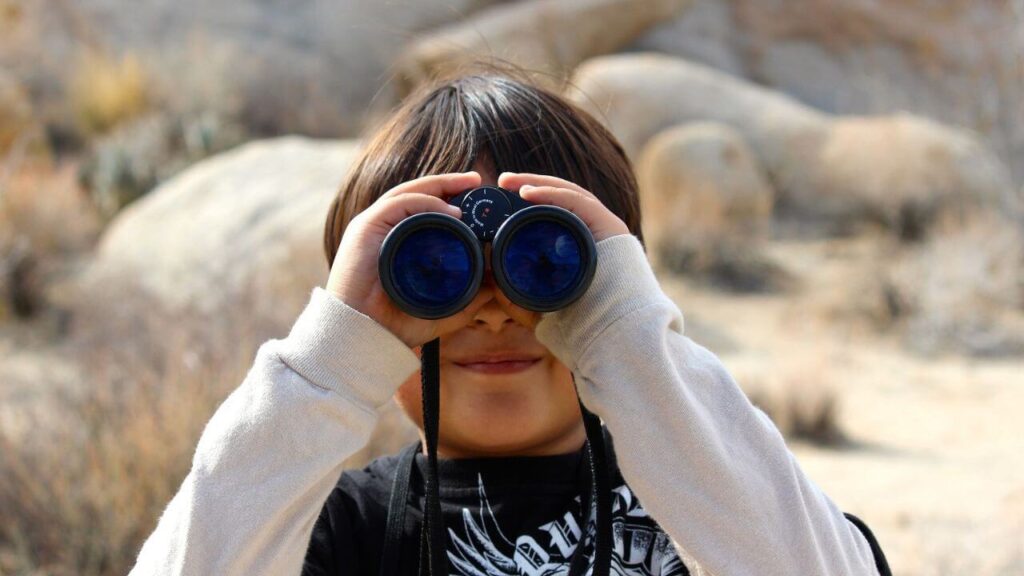
Stay Hydrated and Snack Smart: Wildlife excursions can be physically demanding. Carry plenty of water and healthy snacks to keep everyone energized throughout the day.
Dress Comfortably: Dress your children in comfortable and weather-appropriate clothing, including hats and sunscreen for sun protection. Layers are essential for varying weather conditions.
Essentials to Pack for a Family Wildlife Adventure
First Aid Kit: Include basic medical supplies, such as bandages, antiseptic wipes, and any necessary medications for your family.
Insect Repellent: Depending on your destination, insect repellent can be crucial for protection against mosquitoes and other insects.
Comfortable Footwear: Ensure everyone has comfortable and supportive walking shoes suitable for the terrain.
Rain Gear: If you’re visiting a rainforest or during the rainy season, pack lightweight rain jackets and waterproof covers for your gear.
Field Guides: Bring wildlife field guides or apps to help identify and learn about the animals you encounter.
Reusable Water Bottles: Stay eco-friendly by bringing refillable water bottles for each family member.
Backpacks: Lightweight backpacks are handy for carrying essentials and any treasures your children collect during the trip.
Portable Chargers: Keep your devices charged for communication, photography, and educational apps.
Travel Documents: Ensure you have passports, visas, and any required permits for your destination, as well as copies of important documents.
Travel Insurance: Consider purchasing travel insurance that covers unexpected events or emergencies.

Embarking on a wildlife adventure with your children in Asia is more than just a vacation—it’s an opportunity to ignite their curiosity, foster a love for nature, and create cherished memories as a family. Asia’s diverse landscapes and remarkable wildlife offer a canvas for extraordinary experiences that will leave a lasting impression on young minds.
Traveling with children requires thoughtful planning, including safety measures, age-appropriate activities, and engaging learning experiences. Teaching kids about wildlife conservation and respecting animals in their natural habitats becomes integral to the journey.
As you prepare for your family’s wildlife adventure, remember to pack essentials like comfortable clothing, binoculars, and first-aid supplies, ensuring both comfort and safety throughout your trip.
In the end, the memories forged on these wildlife excursions in Asia will be cherished by your family for years to come. Witnessing the beauty of nature, understanding the importance of conservation, and sharing these experiences together will not only enrich your family’s bond but also inspire a generation of young nature enthusiasts and stewards of the Earth’s precious wildlife.

